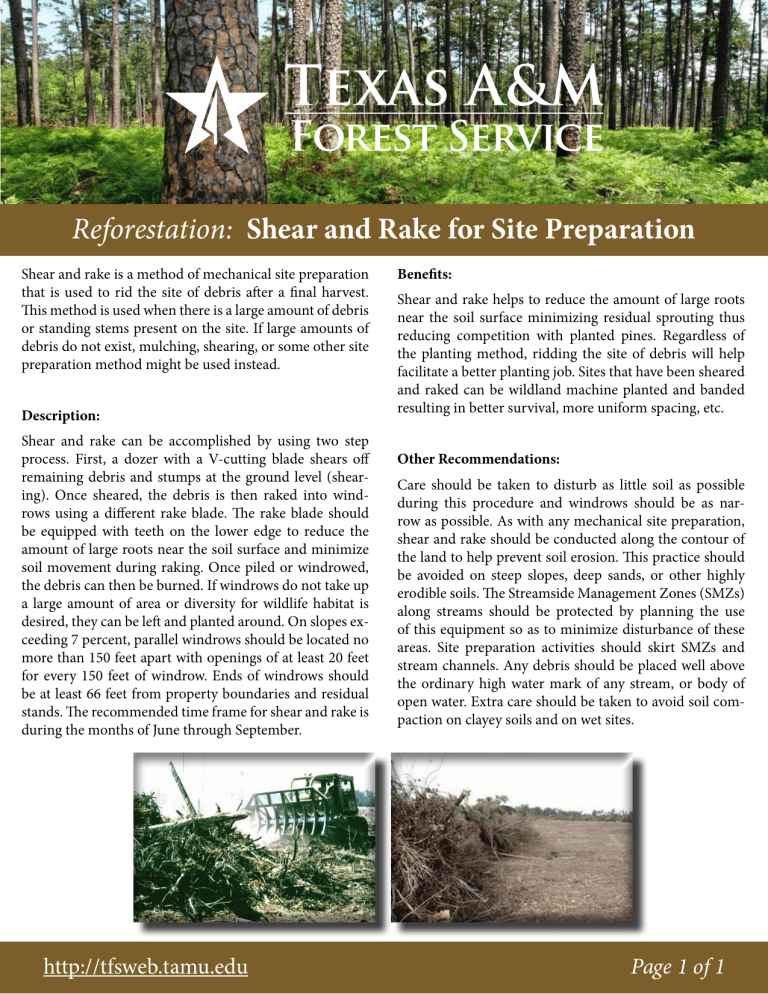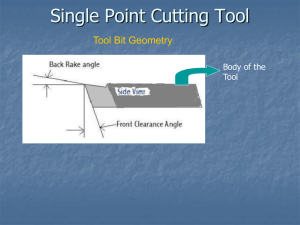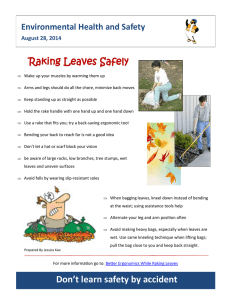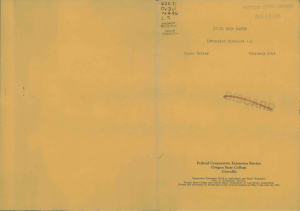Reforestation:

Reforestation: Shear and Rake for Site Preparation
Shear and rake is a method of mechanical site preparation that is used to rid the site of debris after a final harvest.
This method is used when there is a large amount of debris or standing stems present on the site. If large amounts of debris do not exist, mulching, shearing, or some other site preparation method might be used instead.
Benefits:
Shear and rake helps to reduce the amount of large roots near the soil surface minimizing residual sprouting thus reducing competition with planted pines. Regardless of the planting method, ridding the site of debris will help facilitate a better planting job. Sites that have been sheared and raked can be wildland machine planted and banded resulting in better survival, more uniform spacing, etc.
Description:
Shear and rake can be accomplished by using two step process. First, a dozer with a V-cutting blade shears off remaining debris and stumps at the ground level (shearing). Once sheared, the debris is then raked into windrows using a different rake blade. The rake blade should be equipped with teeth on the lower edge to reduce the amount of large roots near the soil surface and minimize soil movement during raking. Once piled or windrowed, the debris can then be burned. If windrows do not take up a large amount of area or diversity for wildlife habitat is desired, they can be left and planted around. On slopes exceeding 7 percent, parallel windrows should be located no more than 150 feet apart with openings of at least 20 feet for every 150 feet of windrow. Ends of windrows should be at least 66 feet from property boundaries and residual stands. The recommended time frame for shear and rake is during the months of June through September.
Other Recommendations:
Care should be taken to disturb as little soil as possible during this procedure and windrows should be as narrow as possible. As with any mechanical site preparation, shear and rake should be conducted along the contour of the land to help prevent soil erosion. This practice should be avoided on steep slopes, deep sands, or other highly erodible soils. The Streamside Management Zones (SMZs) along streams should be protected by planning the use of this equipment so as to minimize disturbance of these areas. Site preparation activities should skirt SMZs and stream channels. Any debris should be placed well above the ordinary high water mark of any stream, or body of open water. Extra care should be taken to avoid soil compaction on clayey soils and on wet sites.
http://tfsweb.tamu.edu
Page 1 of 1








